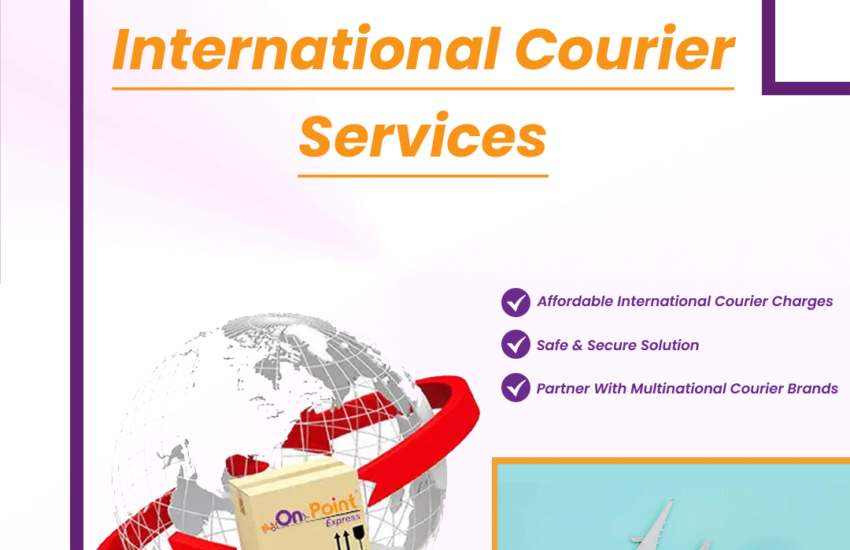In today’s interconnected world, sending packages across borders has become a commonplace need for individuals and businesses alike. Whether you’re an e-commerce entrepreneur shipping products overseas or simply wanting to send a gift to a loved one abroad, understanding international courier service is crucial. This guide aims to equip you with the knowledge and tools to navigate this complex yet essential service.
- Unveiling the Landscape:
- Major Players:Dominant players like DHL, FedEx, UPS, and TNT Express offer extensive global networks and established reputations. Regional and national couriers provide competitive options, often specializing in specific routes or services.
- Service Tiers:Standard, express, and economy options cater to different budgets and speed requirements. Express services prioritize speed, delivering within 2-5 days, while economy options offer lower costs but longer delivery times (7-10 days or more).
- Choosing the Right Service:
- Size and Weight:Consider the package’s dimensions and weight. Different weight brackets come with specific pricing and service availability.
- Destination:Research customs regulations and restrictions at the destination country. Some items may require special permits or documentation.
- Value and Insurance:Evaluate the package’s value and choose appropriate insurance coverage to protect yourself from potential loss or damage.
- Time Sensitivity:Assess the urgency of delivery. Express services are ideal for time-critical shipments, while economy options are suitable for non-urgent items.
- Demystifying Costs:
- Base Rates:These depend on weight, destination, and service tier. Expect higher costs for heavier packages, express deliveries, and remote destinations.
- Fuel Surcharges:Fluctuations in fuel prices can lead to additional charges.
- Duty and Taxes:The recipient may be responsible for import duties and taxes levied by the destination country. Research beforehand to avoid surprises.
- Brokerage Fees:If the courier handles customs clearance, expect brokerage fees for their services.
- Documentation Essentials:
- Commercial Invoice:This document details the shipment’s value, contents, and origin. It’s crucial for customs clearance and accurate duty assessment.
- Packing List:This itemizes the package’s contents for customs inspection.
- Customs Declaration:This form declares the nature and value of the goods for customs purposes.
- Origin of Goods Certificate:This may be required for specific goods depending on trade agreements between countries.
- Packing Prowess:
- Use sturdy boxes:Choose appropriate box sizes and materials suitable for the weight and fragility of the items.
- Secure packing:Fill any empty spaces with cushioning materials to prevent movement and damage.
- Labeling Clarity:Clearly mark the package with the recipient’s address, your address, and any necessary customs labels.
- Prohibited Items:Familiarize yourself with items prohibited or restricted for international shipping to avoid delays or seizures.
- Tracking and Delivery Expectations:
- Track Your Shipment:Most couriers offer online tracking tools to monitor your package’s progress throughout its journey.
- Delivery Methods:Depending on the destination and service, delivery might be direct or require collection from a local post office or courier depot.
- Delivery Timeframes:Quoted delivery times are estimates and can be affected by customs clearance, unforeseen circumstances, or peak seasons.
- Beyond the Basics:
- Fragile and Valuable Items:Special packaging, handling, and insurance are recommended for sensitive items like artwork or electronics.
- Temperature-Controlled Shipments:Perishables or pharmaceuticals may require specific temperature-controlled containers and services.
- Dangerous Goods:Shipping hazardous materials necessitates special regulations, packaging, and documentation. Consult the courier and relevant authorities for compliance.
- Embracing Technological Advancements:
- Online Booking Platforms:Simplify booking, compare prices, and manage shipments conveniently through online booking platforms.
- Automated Customs Clearance:Some couriers offer automated customs clearance solutions for faster and smoother processing.
- Real-time Visibility:Advanced tracking tools provide real-time visibility into your shipment’s location and status.
- Environmental Considerations:
- Carbon Offset Programs:Several couriers offer carbon offset programs to neutralize the environmental impact of your shipment.
- Sustainable Packaging:Opt for eco-friendly packing materials like recycled cardboard and biodegradable alternatives.
- Consolidation and Route Optimization:Look for couriers committed to optimizing routes and consolidating shipments to reduce environmental impact.
- Conclusion:
Navigating international courier service can seem daunting, but with proper planning, knowledge, and the right partner, you can ensure your shipments reach their destinations safely, efficiently, and cost-effectively. By exploring the various options, comparing services, and understanding the key considerations, you can make informed decisions and streamline your international shipping experience

